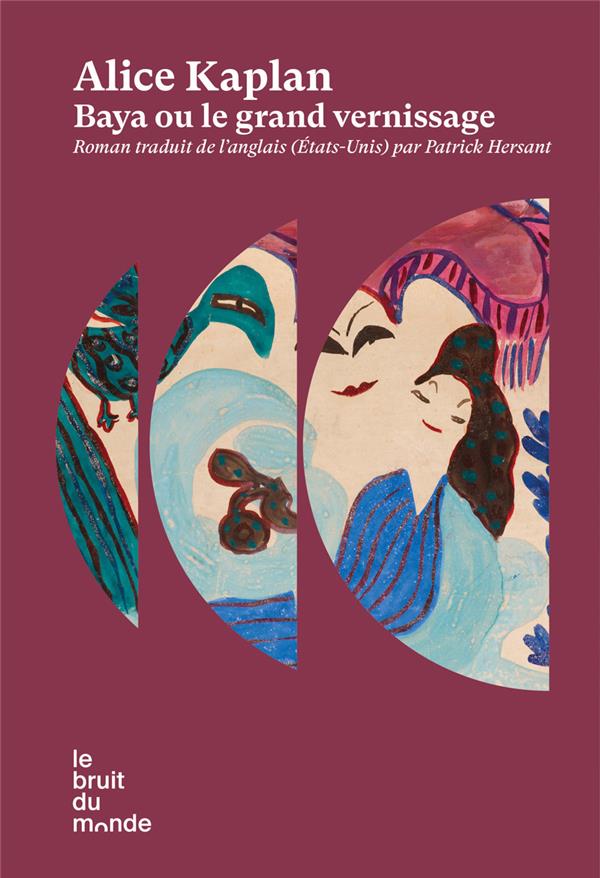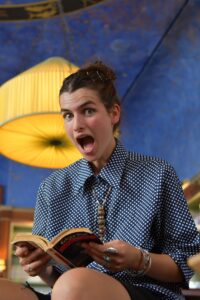Baya ou le grand vernissage by Alice Kaplan

American writer and historian Alice Kaplan tells the story of Baya, a modern art prodigy discovered at the age of 15 at an exhibition at the Galerie Maeght on November 21, 1947. The young girl created a sensation in Paris. Her colorful art, refined motifs, luxuriantly colored canvases and pottery, which evoke her personal imagination heavily influenced by Kabyle tales, earn her praise from the Parisian intellectual and artistic elite. Georges Braque, François Mauriac, and Albert Camus all expressed admiration. In France, Baya worked on her models at the Madoura studio, where she met Picasso. A friendship and mutual respect grew out of this encounter.
Baya Mahieddine (1931-1998) achieved sudden fame in 1947 at the age of almost 16. A few years earlier, she had been orphaned and living in poverty with her grandmother on the outskirts of Algiers. The story goes that to keep herself busy, the pre-teen would design dresses inspired by fashion magazines. She was spotted in this way by Marguerite Caminat, an artist and art lover, who took her under her wing and encouraged her artistic practice. The teenager went on to meet some of the most important personalities of her time, including André Breton and Picasso, both of whom admired her work.
One of Alice Kaplan’s merits is her ability to capture the historical context of the period. The author of Looking for The Stranger: Albert Camus and the Life of a Literary perfectly depicts artistic life in Paris in the immediate post-war period, with the first uprisings in Algeria and their political repercussions in France. “For my part, thanks to Baya’s story, I’ll never see post-war France in the same way again,” says Alice Kaplan, who discovered Baya’s paintings at a 2018 exhibition in New York.
Another of her merits is her extensive archival work. She was able to base her personal research on all the papers, diaries, and personal notes kept by Marguerite Caminat about the 1947 vernissage. In a France Culture broadcast in July 2024, she reminds us that her primary aim is “to put Baya back at the center of her own story.” Many fantasies have been projected onto the artist, notably Orientalist ideas or an association with art brut or naive art. Alice Kaplan wants to remind us that Baya was trained as an artist. It’s difficult to recount the life of an artist who kept repeating “I don’t know” at her Paris exhibition. At that famous vernissage at Maeght, two rival forces were at work: on the one hand, the shameless persistence of journalists who thought they knew everything and projected their own fantasies onto Baya; on the other, the artist’s stubborn resistance.
After a breathtaking start to her career, Baya went into a long artistic eclipse before returning to painting, never to leave it again. Today, her work is exhibited in many countries. Alice Kaplan takes us on a journey of discovery of a little-known, self-effacing artist, thanks to her meticulous work in the archives, without concealing their limitations or her own questions. A fine connoisseur of Algeria, the professor of French literature at Yale University has written a book teeming with details in narrative fiction: “Baya takes me back to a time when, lightened by the burden of knowledge and the erosion caused by a lifetime of reflection, I looked at things more freely”.
Baya ou le grand vernissage, Alice Kaplan, traduit par Patrick Hersant, Le Bruit du monde.
Click here to purchase this book with us.


